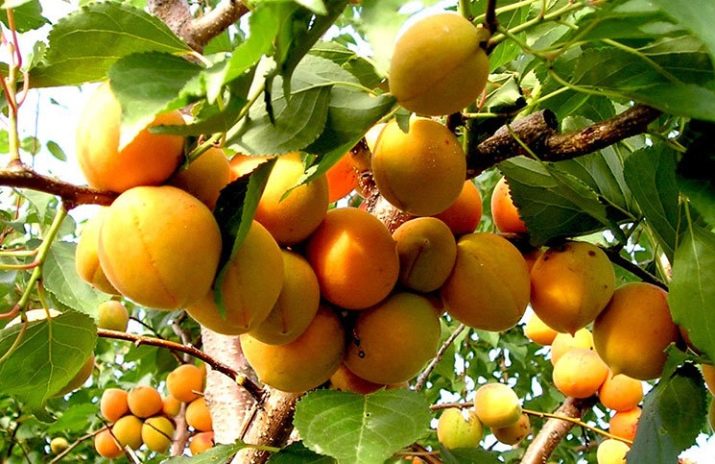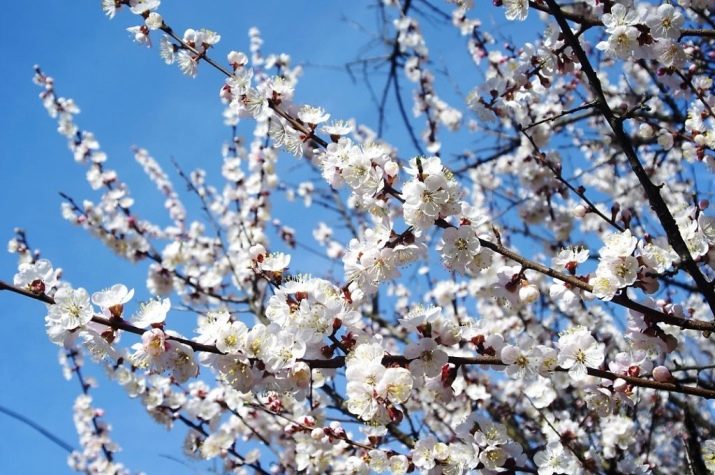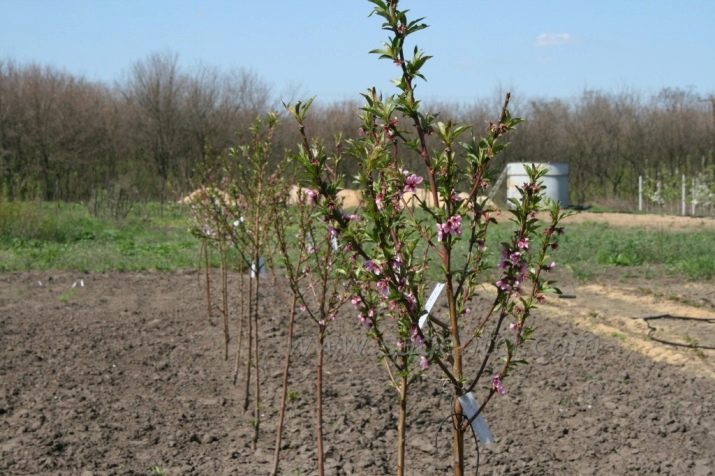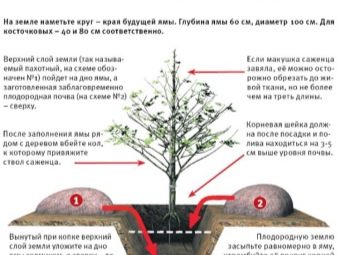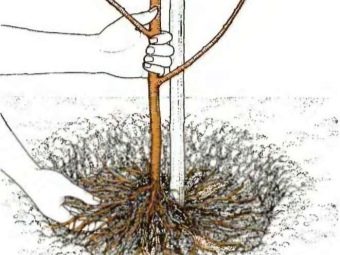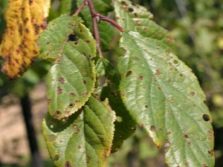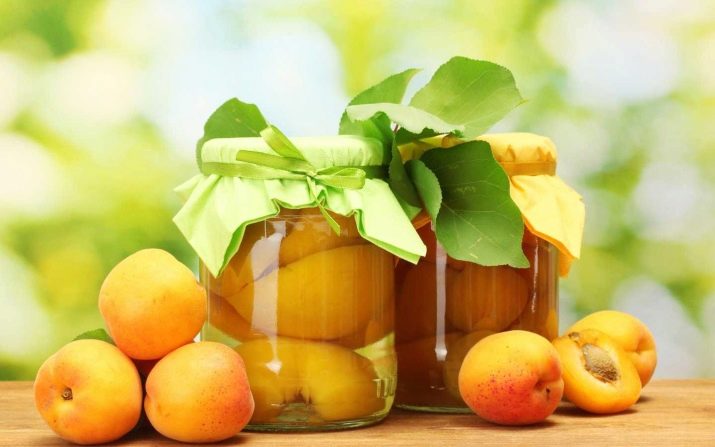Description varieties of apricots "Aquarius"
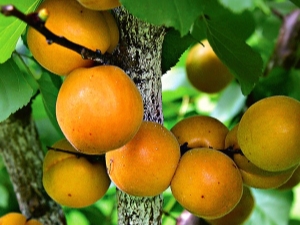
Apricot is a fruit tree that is famous for its tasty and sweet fruits.It is customary to assert that such trees best take root and bear fruit in southern latitudes. However, breeders have long brought a number of winter-hardy varieties, which can be grown even in harsh climates. One of these varieties - "Aquarius".
Description and characteristics of the variety
Apricot "Aquarius" - a comparative novelty in the world of gardening. They took him out in 1996, but he began to gain his popularity after 2004. Received this form was using the method of free pollination.
"Aquarius" refers to tall varieties of apricots, with proper care, the tree can grow up to 6 meters. The color of the bark is brownish-red, straight shoots form a voluminous, but not too dense crown. The leaves of the tree are large, dark green in color, round, but with sharp tips. Veins almost invisible.
Apricot blooms quite lush, the whole tree is covered with small white flowers. Each flower has five petals and is very tightly attached to a branch. The subtle honey aroma released during flowering is heard for many meters around and actively attracts beneficial honey insects.
Fruits of "Aquarius", compared with the earlier types of apricots, are very large - up to 25 g. The color range can vary from yellow to bright orange, the skin is covered with a light down. The flesh of the fruit is not too dense, has an orange color and a well detachable bone. The taste of sweet apricots with a slight sourness. Tasters rate the taste of the variety as one of the highest.
Fruit "Aquarius" begins three years after landing. Young trees usually yield up to 15 kg of apricots, while the yield of adults can reach 30 kg. If it is good to take care of the tree and carry out preventive measures, the variety will delight with a crop of 18-20 years.
Experienced gardeners advise planting other varieties of apricot trees on the site. “Aquarius” is self-fertile, but the presence of a number of different varieties will help it to increase the yield and affect the taste of the fruit.
Landing technique
The first thing before landing you need to take care of the cleanliness of the site. In advance they dig up the earth, removing the remains of old plants, roots and weeds. Apricots are very fond of the sun, so the best solution would be an open sunny place. Take care that the area is not exposed to strong drafts.
In order to properly plant trees, it is worth remembering the technology of placement of all fruit crops. The distance between each seedling should be at least 5 meters, and if you form rows of trees, make a distance of up to 7 meters between them.
Apricot will actively grow up, so be prepared for the constant pruning of extra twigs.
Beginning gardeners prefer to purchase trees in finished containers. They can be planted at any time, as there is already ready land, and the roots are in the correct position. Open seedlings are planted in spring or early September to allow the tree to adapt before the onset of cold weather.
The next step is cleaning the clay from the site and preparing the drainage. Trees are in need of calcium, so limestone crushed stone is usually taken as drainage. An additional element for proper growth will be broken brick, which is mixed in small quantities with rubble.
Then a hole is dug in a circle of about a meter and a depth of 70 cm. The necessary drainage is put on the bottom - rubble in combination with brick, and sod on top of it is covered with sod. The seedling is planted directly in the center of the recess and carefully straighten the roots, and then covered with earth. It is necessary to tamp the ground carefully so that there are no internal micropads left. The last action is watering the seedling and mulching the soil around the trunk.
Proper care
To grow healthy trees and get a good harvest, you need to remember a few subtleties of care for the apricot "Aquarius".Be sure to feed seedlings at all stages of growth. The first dressing is the simplest - two or three spoons of Kemira products are digging into the snow that has not yet come down around the trees. In the spring, apricots respond well to nitrogenous and superphosphate fertilizers, but in the summer they will need a lot of phosphorus.
A good idea would be to feed the trees with humus. It is necessary to mix 1 part of humus and 10 parts of water and water the apricots well. It should be borne in mind that the variety does not like cold watering, so pre-warm the water in the sun.
A good fertilizer for all fruit trees is a mullein - it is recommended to make it in the fall.
It is very important to know how to water apricots correctly; there is a big difference between the nuances of watering young and adult trees. Young seedlings require more water, they should be watered once a week, and even more often during drought. Mature trees are less demanding, their roots can get water from under the ground. Nevertheless, 4 irrigation needs to be ensured - in April, May, early June and in October. Experts recommend not just flood the trees with water, but allow the fluid to drain through the specially made grooves.
Aquarius is a winter-hardy variety, but with proper preparation for the winter months. In early September and March, preventive work is carried out - the lower part of the trees are carefully whitened. It will be good to add a small amount of copper sulfate to the whitewash - this will help the apricots not to catch fungal viruses.
Disease prevention
In gardening it is better to prevent the occurrence of diseases in time than to cure them. Although "Aquarius" is considered to be resistant to virus variety, it is necessary to carry out the processing of trees in advance. The greatest danger for apricot trees is moniliosis. The disease provokes early dryness of the leaves and blackening of the branches.
As a disease prevention, it is recommended to spray apricot with copper-containing solutions. If the virus is activated, the affected branches and leaves are removed, and the tree is also sprayed as a treatment.
Another danger for "Aquarius" lies in scab diseases. The fungus is most active at the very beginning of spring, as soon as the buds have blossomed. The leaves are the first to suffer - brown spots are formed on them, which contribute to fast twisting and dryness.
If you do not take action, the virus spreads to the ovary and flowers, which as a result will not allow to obtain virtually no crop. In order to prevent the development of the disease, before flowering, apricot is sprayed with a solution of 3% Bordeaux liquid, and during flowering - with "Horus".
The appearance of yellow spots on the leaves may signal the presence of brown spot. This kind of disease leads to the rapid decline of foliage and fruit. At the first sign, immediately remove the diseased parts of the tree and burn it. Bordeaux liquid or solution of copper sulphate will provide significant assistance in the treatment. The soil near the tree also needs careful treatment.
If you follow the recommendations of experienced gardeners, you can select a few points for the care of apricot trees:
- frequent cleaning of fallen leaves, especially in the presence of diseases;
- regular inspection of the tree for affected branches and leaves;
- prophylactic treatment with insecticides and antifungal agents;
- periodic spraying bordeaux fluid to prevent viral diseases.
Reviews
In general, reviews about the grade of apricot "Aquarius" are very good. Gardeners note the resistance of the tree to various diseases, self-fertility, the possibility of rare watering for adult trees, variety winter hardiness. Quite a lot has been said about the unusual taste qualities of apricots. The high yield of fruit trees also causes enthusiastic responses of those who love apricots.
Virtually every review contains interesting tips and experiences.For example, some gardeners claim that Aquarius responds well to organic watering and top dressing. This variety is also excellent for gardeners near Moscow, where temperature fluctuations often occur.
And also apricots varieties "Aquarius" are excellent for preservation, jam and compotes.
Among the negative reviews in the first place note the small shelf life of the fruit. It is advisable to eat apricots either immediately or “start up in production”, otherwise the crop will quickly disappear. Many are frightened by the need for constant preventive work - whitewashing trees, processing with various preparations.
To learn how to properly form an apricot seedling, see the video below.

